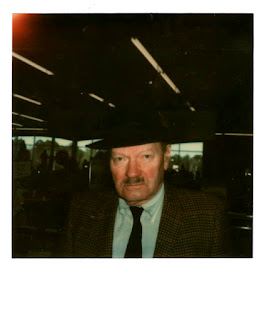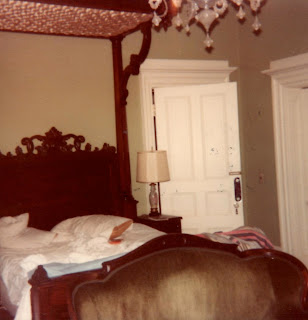From the Goodwood Library: The last chapter of this book is entitled, "Centennial of the Death of General Lafayette". Excerpts follow:
Sunday, May 20th, 1934, was the one hundredth anniversary of the death of General Lafayette. Appropriate services were held in the national capitol in Washington commemorating this event, being attended by President Roosevelt, members of congress, and other public officials and foreign diplomats.
On the afternoon of the same day, at five o'clock, a memorial service was held in the city park in Tallahassee, in honor of the great French soldier and statesman, who was also Leon county's largest landowner, by reason of the township which was selected for him under congressional grant in 1825 being situated in Leon County. Memorial exercises, sponsored by the Tallahassee Historical Society, were arranged by a committee representing the Tallahassee Historical Society, Masons, Daughters of American Revolution, American Legion, Woman's Auxiliary, Daughters of the Confederacy, Sons of Confederate Veterans, and Tallahassee Garden Clubs. Chief Justice Fred H. Davis, of the Supreme Court of the State of Florida, a resident of Tallahassee since earliest childhood, was the principal speaker, and the following program was rendered:
America
Capital City Band, Mr. J. P. Koscielny, Director
Invocation
Reverend Jeffery Alfriend, Chaplain Claude L. Sauls Post, American Legion
La Marseillaise
Capital City Band, Mrs. J. P. Koscielny, Director
Introduction of the Speaker by Dr. W. E. Lewis, Chairman of the meeting
Address
Chief Justice Fred H. Davis, of the Supreme Court of Florida
Presentation of Lafayette Memorial Park
Hon. Jack W. Simmons, Member of Tallahassee City Commission
Benediction
Reverend Jeffery Alfriend
The Star Spangled Banner
Capital City Band, Mr. J. P. Koscielny, Director
Prior to the Exercises the Capital City Band rendered a program of military music at the Band Stand, Corner Park Avenue and Monroe Street, where the ceremonies were held, and presented arms (the usual military salute) during the playing of the American and the French national anthems.
The resolution of the City Commission of Tallahassee, giving the name "Lafayette Memorial Park" to the twelve acre park in the northeastern part of the city, and which lies within the boundaries of the Lafayette Grant, was spread upon the Congressional Record of May 29th, 1934, upon motion of Senator Duncan U. Fletcher, of Florida, and a copy sent by Senator Fletcher to the Ambassador of the French Republic at Washington, was answered by an appreciative letter from the Ambassador.
The Lafayette Grant contains the thirty six square miles of land known officially as "Township One North of Range One East," on the Florida land maps. The monument marking the intersection of the Tallahassee meridian and base line for Florida surveys, which is located about one and one-half miles north of Lafayette Memorial Park, carries a tablet showing that it marks also the southwest corner of the Lafayette Grant.
 |
Chief Justice Fred H. Davis
www.floridasupremecourt.org
Supreme Court Portrait Gallery |
Justice Davis concluded his address with John Quincy Adams' eulogy on Lafayette delivered in Congress in December, 1834:
Lafayette discovered no new principle of politics or of morals. He invented nothing in science. He disclosed no new phenomenon in the laws of nature. Born and educated in the highest order in possession of an affluent fortune, and master of himself and of all his capabilities, at the moment of attaining manhood, the principle of Republican justice and of social equality took possession of his heart and mind, as if by inspiration from above. He devoted himself, his life, his fortune, his hereditary honors, his towering ambition, his splendid hopes, all to the cause of liberty. He came to another hemisphere to defend her. He became one of the most effective champions of our independence; but, that once achieved; he returned to his own country, and thence forward took no part in the controversies which have divided us. In the events of our revolution, and in the forms of policy which we have adopted for the establishment and perpetuation of our freedom, Lafayette found the most perfect form of government. He wished to add nothing to it. He would gladly have abstracted nothing from it. Instead of the imaginary republic of Plato, or the Utopia of Sir Thomas Moore, he took a practical existing model, in actual operation here, and never attempted or wished more than to apply it faithfully to his own country.













